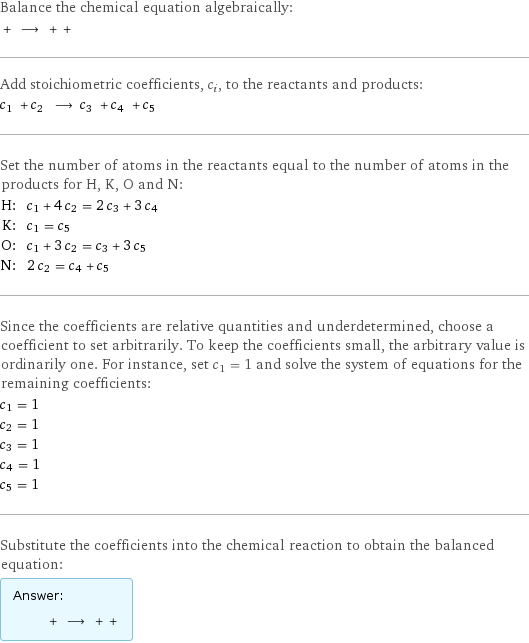Input interpretation

potassium hydroxide + ammonium nitrate ⟶ water + ammonia + potassium nitrate
Balanced equation

Balance the chemical equation algebraically: + ⟶ + + Add stoichiometric coefficients, c_i, to the reactants and products: c_1 + c_2 ⟶ c_3 + c_4 + c_5 Set the number of atoms in the reactants equal to the number of atoms in the products for H, K, O and N: H: | c_1 + 4 c_2 = 2 c_3 + 3 c_4 K: | c_1 = c_5 O: | c_1 + 3 c_2 = c_3 + 3 c_5 N: | 2 c_2 = c_4 + c_5 Since the coefficients are relative quantities and underdetermined, choose a coefficient to set arbitrarily. To keep the coefficients small, the arbitrary value is ordinarily one. For instance, set c_1 = 1 and solve the system of equations for the remaining coefficients: c_1 = 1 c_2 = 1 c_3 = 1 c_4 = 1 c_5 = 1 Substitute the coefficients into the chemical reaction to obtain the balanced equation: Answer: | | + ⟶ + +
Structures

+ ⟶ + +